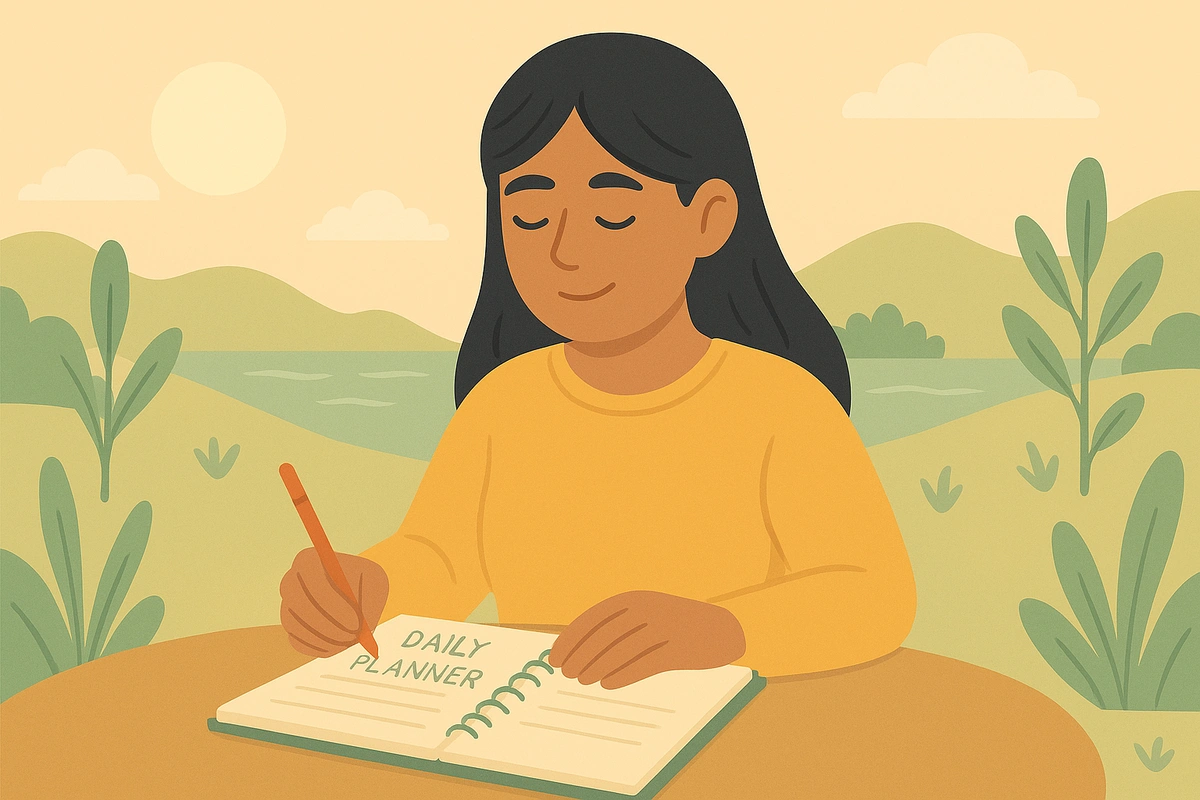
Movement as regulation involves using gentle, mindful physical activities to calm your nervous system and reduce stress. This powerful technique recognizes that your body and mind are deeply connected - when you move with intention and awareness, you can literally shift from a state of anxiety and tension into one of calm and balance.
Your nervous system has two main operating modes: the sympathetic system that activates during stress (your body's "gas pedal"), and the parasympathetic system that promotes relaxation and recovery (your body's "brake"). Think of gentle movement as a bridge between these states - it gives your active energy somewhere positive to go while signaling to your brain that you're safe and can begin to relax. Unlike intense exercise that further activates your stress response, regulatory movement helps you find the sweet spot where physical activity becomes deeply calming.

Daily planning to reduce overwhelm involves creating a structured approach to organizing your tasks, time, and priorities before your day begins. This proactive practice helps you move from reactive scrambling to intentional action, reducing the mental load that comes from constantly deciding what to do next throughout your day.
When you wake up without a plan, your brain immediately begins processing all the possible things you could or should be doing, creating an overwhelming mental traffic jam. Think of daily planning like being your own air traffic controller - instead of having planes circling randomly in the sky, you create clear flight paths that prevent crashes and keep everything moving smoothly. Research shows that 25% of our happiness hinges on how well we manage stress, and the most effective way to manage stress is to prevent it from occurring through planning.